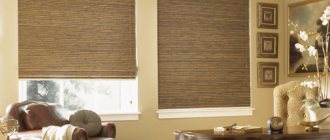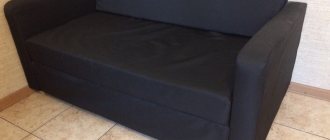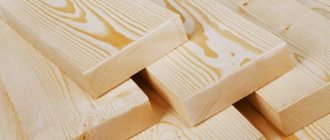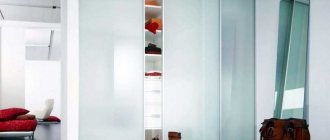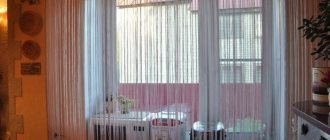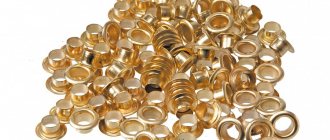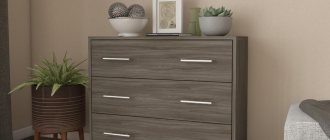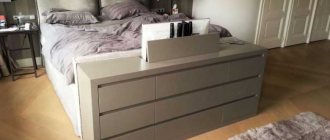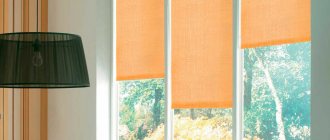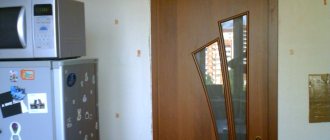Curtain braid is a tape with one or more cords inside, and loops and pockets on the reverse side. This design makes textile accessories multifunctional. It makes sewing curtains easier, as it eliminates the need to sew each loop for fastening separately. In addition, the tape allows you to form neat flounces and folds of different shapes on the canvas.
What you need to know
You don’t have to turn to a designer for help to make the space in your home a little better. Curtain tape fits perfectly into the finished interior, complementing it, transforming it and adding its own minor touches. Although professionals often resort to this accessory in order to correctly place accents in those places where it is necessary.
Even the simplest curtains on curtain tape with regular braid, which is most often made of thick fabric, can transform them. The tape is an excellent solution for those whose curtain rods are not of the required length. In this case, she selects curtains and increases the light transmission through the window.
How to calculate length
The consumption of the braid is determined by the width of the curtains. This is the right approach. Proper calculation involves choosing the strip length parameter in accordance with the length of the cornice. The canvas should extend beyond the edges of the window opening. All versions of cornices extend beyond the windows by 15 cm on both sides. If the window width is 150cm, the cornice will be 180cm in length.
When calculating the length, the gathering factor is involved: 2, 5, 3, 1. If sewing curtains has a standard gathering with a coefficient of 3, this means that the canvas, with a gathered width of 1 m, after multiplying by the coefficient, will require a strip 3 m long. By pulling the material together in a suspended form, regular, frequent folds are obtained. A long cornice of 180 cm holds two panels. By multiplying by a factor of 3, the strip length is 540 cm (2 m 70 cm for each sheet).
For a side hem, add 3 cm to the right and left sides of the fabric. If there is a cut bevel, add another 2 cm. The final width of the curtains, taking the above calculation, is taken as 270 +10 = 280 cm for one canvas and 560 cm for two. The same parameters correspond to the length of the curtain strip. Additional processing of the braid requires adding 4 or 5 cm to its length.
When to use it
Surprisingly, the use of tape is not limited to just assembling the curtain at the edge of the window. Although this is logically convenient, when in order to slightly “curtain” the windows, you only need to untie the braid. You can achieve the necessary folds in several places at once and even at the very top of the curtain.
Making decorative ribbons yourself can be quite problematic, but the housewife can make the simplest options.
What to replace
An alternative to ribbon, if you couldn’t buy it or make it yourself, can be a thick “Iris” thread. It can replace braid with hooks and alligator clips.
Instead of braid, which has eyelet rings, you can limit yourself to one longitudinal solid pocket, with an internal diameter equal to the diameter of the pipe cornice. The top of the curtains is folded and stitched along the entire length.
Tape size
If we need to hide the tape from view, or we have a fairly narrow cornice, then the choice should be a narrow braid. If our ribbon should emphasize the idea of the designer or housewife, and the number of fastenings to the curtain is limited, we should choose a wide option.
The curtain can be made of dense and heavy material. To avoid possible sagging over time, it is similarly better to choose a wide option.
Cornice lighting or plasterboard construction?
From plasterboard you can make ceilings of unusual shapes and designs, create volumetric lighting and installations. But its installation requires equipment and skills, plus subsequent finishing. Often done by specialists according to pre-calculated projects.
If you need contour lighting around the perimeter, it is better to use a cornice. Made from foamed plastic – polyurethane. Lightweight material, for installation it is enough to have glue and more or less even walls. Any glue will do, for example “Dragon” or “Moment-montage”. Apply glue to the cornice and press it to the wall and ceiling in the desired location.
Illuminating the cornice with LED strip is an excellent solution for creating atmospheric lighting in the room.
If when installing diodes in plasterboard niches everything can be quite complicated, with a cornice the situation is somewhat different. Now the tape can be laid more freely in the cavity of the cornice and not be afraid that flaws in the lighting installation may be noticeable. However, there may be nowhere to place the power supply.
In any case, installation issues depend on the shape and dimensions of the cornice.
Loops
Allows you to hang curtains directly on the curtain. Sometimes there are various options with several rows of loops. In this case, we will be able to adjust the height of the curtains.
Combined. The most common option is a combination of Velcro and loops.
Curtain grouping options
For almost every design option for curtains, you can find your own ribbon, which will differ in both its unique design and the function it performs.
This allows the designer or housewife to have at her disposal an incredibly large number of options to emphasize the style of a particular decor.
Types of drapery
Let's look at the most commonly used fold options:
- Pillar. The simplest, but no less elegant option. The folds are quite narrow and neat. The degree of drape depends on what material you use.
- Waffle. In this case, the drapery turns out to be uneven.
- Pencil. The implementation is described by the name itself. Narrow at the beginning and wide towards the end.
- Shot glass. The fold, which is similar to a kind of glass, tapers slightly at some stage of the drapery.
- Bow. Drapery, which, due to some flattening of the material, looks like a bow.
- Single-sided or double-sided.
- X-shaped. Drapery in which the middle of the fold is narrower than the rest of it.
- Fan. The fold resembles a woman's fan.
Hemming the tape
From all of the above, the question naturally arises of how to sew the ribbon to the curtain yourself. You can do this easily if you follow simple instructions in just a few steps:
The curtain tape should look harmonious with the curtain and not stand out from the overall design solution.
If the tape has non-standard or unfinished edges, it is necessary to hem them. If the braid has a ready-made appearance or was supplied with the curtains, then no processing should be done.
Fold the curtain over the same amount as your tape and either pin the result or use an iron to secure the result.
Place your ribbon on top of what you have obtained, leaving ten millimeters at the top, keeping in mind the type of folds you want to get. Refined drapery requires more space at the top.
There should be about one and a half to two centimeters left on the left and right of the curtain.
The tape is secured in any way convenient for you.
Using a sewing machine, the braid is sewn to the curtain or tulle. The number of seams will be equal to the number of strands of tape.
We process the left and right parts and remove everything that was holding our tape.
Sewing tips
- When choosing a curtain tape, measurements are taken with a construction tape to obtain a more accurate result.
- Tape may shrink during initial washing. She needs correction. It needs to be wetted, dried and ironed.
- The braid is attached to the curtain from the inside out, departing from 2 to 5 cm from the top edge of the canvas. The edges of the tape are folded 2 cm.
- The optimal coefficient of assembly of a curtain strip is considered to be 2-2.5.
- To ensure a strong connection between the braid and the material, double seams are made.
What other options are there?
Sometimes a situation arises when hemming curtains with tape is impossible due to some reasons. For example, having gone around all the stores, you cannot find the option you need, or the design solution requires a different execution.
Firstly, instead of tape, you can use a very dense thread, while performing all the necessary calculations yourself, such as the drapery coefficient. Based on what folds you ultimately want to get.
Secondly, having a curtain that involves the use of either rings or eyelets with them, you can sew something suitable for this format. And if it’s unlikely to be possible to handle the eyelets yourself without the proper experience and skill, then you can sew ribbons to the curtain that resemble a kind of pocket. In this case, a solution will be found.
We take proper care
As a rule, curtain and tape materials have different textures with their own properties and characteristics. With the same wash, they can react differently to it, where each material will shrink differently. To avoid this, wash the braid in the washing machine before stitching, dry it, and only then start manipulating it.
An important point will be the correct operation of the product. When forming folds, pull the threads on both sides at the same time, not just one.
Consider the material from which the tape is made. It may have its own temperature setting for the iron, and the use of the washing machine only in a gentle mode, which imposes its own characteristics when washing occurs together as a single, finished product.
How to assemble and hang
The gathered ribbon is formed following the instructions:
- Before folding, the material of curtains and ribbons is ironed.
- The application and stitching of the braid on the canvas follows.
- Under the braid, 2.5 cm below the edge, strings are passed - cords. Stitching is done at the top and bottom under each cord. The cords must move freely. They are pulled out and tied at the base of the decorative strip so that there is no tightening.
- The side with the tied ends of the ropes is attached, for example, to a door handle. The fabric stretches, moving towards the fixed side. The folds are evenly distributed.
- The hanging ends of the ropes - cords - are hidden in pockets sewn on the wrong side.
- Loops are formed on the pockets of the tape. They are secured on hooks alternating 8-12 cm from each other. You cannot attach hooks to cords. Otherwise the curtains will sag.
- When the curtains are finished being assembled, they are hung on the ceiling cornice:
- The stopper is removed from the cornice. The hooks are driven into the path;
- The outermost first and second hooks are secured together with a latch to lock the edge of the canvas.
